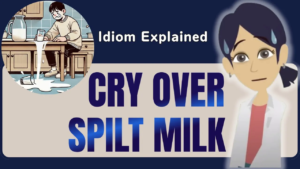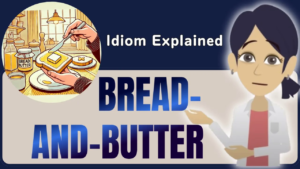Ever heard someone casually dismiss something with a fruity phrase that left you completely confused?
To be completely indifferent or unconcerned about something; to not care at all.
This colorful expression has nothing to do with actual fruit, yet it perfectly captures that feeling of total disregard.

When you hear someone say they “don’t give a fig,” they’re expressing their complete lack of interest in a slightly more playful way than simply saying “I don’t care.”
First encountered in the 16th century, this idiom adds a dash of personality to everyday conversations while letting you express indifference without sounding too harsh.
The Core Meaning
1. Definition
- To “not give a fig”: Means to not care about something or someone at all. It’s similar to saying “I don’t care,” but with a slightly more colorful twist.
- This phrase is often employed to underline that a matter holds little to no importance to the speaker, implying outright indifference.
2. Historical Background
- The idiom is frequently cited as originating in the 16th century, when figs were considered low-value items.
- Over time, saying you “don’t give a fig” evolved into an emphatic way of declaring that something is beneath your concern or interest.
When you look at historical references, you’ll find variations like “not worth a fig” or “I don’t value it a fig.” These older forms carry the same sense of triviality we use today.
Regardless of its precise origins, the essence remains clear: You simply do not care.
A Lighthearted Story
Here’s a short anecdote that demonstrates how “not give a fig” might pop up in a casual setting:
- Eager Customer: Imagine a bustling outdoor market with rows of fresh produce and the sweet aroma of ripe fruit in the air.
- The Inquiry: A curious shopper excitedly asks if figs are in stock, hoping to take some home.
- The Letdown: The vendor, smiling apologetically, explains they’re sold out of figs for the day.
- Frustrated Response: Annoyed by this news, the shopper blurts out, “I don’t give a fig about your excuses!”
- Confused Vendor: The seller, unaware of the idiom, stares blankly, unsure why figs are suddenly the subject of anger.
In this imaginary scenario, “I don’t give a fig” signals the shopper’s complete indifference to the vendor’s explanation.
He’s simply upset and expressing that he doesn’t care to hear reasons or apologies. While it may seem harsh, it vividly shows how the idiom portrays a sense of disinterest or dismissal.
Everyday Life Examples
1. Workplace Situations
- New Policies: Suppose your manager introduces a minor workplace policy that doesn’t affect you much. If you say, “I don’t give a fig about that policy,” it implies you’re uninterested or unbothered.
- Office Gossip: When colleagues gossip, you might brush it off with, “I don’t give a fig about that rumor,” to emphasize that you refuse to get caught up in trivial talk.
2. Social Gatherings
- A Friend’s Party: Maybe you missed a friend’s gathering. Someone asks if you regret not attending. You could reply, “I really don’t give a fig about missing it,” subtly signaling your indifference without sounding overly rude.
- Trending Topics: When everyone buzzes about a social media craze and you’re not impressed, a simple, “I don’t give a fig about that new trend,” underscores your lack of interest.
3. Family Conversations
- Family Decisions: If relatives debate the color of new curtains and you truly don’t mind, you might chime in with, “I don’t give a fig which color we choose,” to show it’s all the same to you.
- Meal Choices: During a family dinner where everyone weighs in on the menu, stating, “I don’t give a fig what’s for dessert,” communicates that any sweet treat is fine.
By incorporating this idiom into routine scenarios, you can better grasp how naturally it fits into English conversations. Just remember not to overuse it—idioms are most effective when used sparingly.
Idiom Memory Tricks
1. Visualize the Fig
Picture a tiny piece of fruit that you can casually toss aside if you deem it unimportant. This mental image helps anchor the phrase’s sense of carelessness or dismissal.
2. Link It to Indifference
Anytime you catch yourself feeling completely unconcerned, think, “I don’t give a fig!” This direct association cements the idiom in your mind, tying it to genuine emotions.
3. Practice Out Loud
Imagine or rehearse short dialogues:
- “Should we watch that show everyone’s raving about?”
- “I don’t give a fig; let’s watch something else.”
4. Connect to Real Life
Recall moments when you truly didn’t mind. Pairing real experiences with the idiom will help embed it into your active vocabulary. You’ll be less likely to forget or mix it up.
Frequent Mix-Ups
Sometimes, English learners assume “not give a fig” involves a literal fig. This confusion may lead to humorous exchanges, like responding with something about figs’ nutritional value!
But as you now know, the phrase has nothing to do with actual fruit.
If you hear it in a heated conversation, note that it often conveys strong indifference or even dismissiveness. Depending on tone, it can sound blunt, so be mindful of how and where you use it.
Real-Life Story
- John’s Struggles: John faced numerous setbacks—unexpected expenses, project failures, and personal stress. He confided in a friend, hoping for sympathy and suggestions.
- Friend’s Reaction: The friend said, “I don’t give a fig about your problems,” in a casual tone. Whether intentional or not, it displayed a surprising lack of empathy.
- Aftermath: John felt isolated. This indifference worsened an already difficult time in his life, highlighting how words can amplify emotional burdens.
This example underscores that idioms like “not give a fig” can carry weight in serious situations. While it’s a handy expression, it can also come across as insensitive if misapplied.
Similar & Opposite
1. Similar Idioms
- Not give a damn: A more direct version that conveys the same meaning of not caring.
- Couldn’t care less: Another popular phrase showing total lack of concern.
2. Opposite Idioms
- Care a lot / Care deeply: Signifies the opposite sentiment, indicating strong concern or interest.
- Value highly: Emphasizes the importance or worth you attach to something.
By understanding these counterparts, you’ll learn when to use “not give a fig” versus a more polite or enthusiastic expression.
A Related Expression
- What It Means: Declares something is worthless or lacking value.
- Short Story Example:
- A man tries to purchase gold but discovers the store has no stock.
- Feeling his time was wasted, he grumbles, “Dealing with this place isn’t worth a dime!”
- This remark parallels “not give a fig,” emphasizing utter dismissal.
Both “not give a fig” and “not worth a dime” convey the idea that something holds little or no importance.
Learning multiple idioms helps you adapt to various contexts, from casual, playful chats to more serious or critical remarks.
Pop Quiz: Check Your Idiom Skills
Not Give a Fig

Final Thoughts
Mastering idioms like “not give a fig” allows you to add a layer of expressiveness to your communication.
By using it in the right contexts—where genuine indifference is appropriate—you can capture a sentiment more precisely than if you simply said, “I don’t care.”
Key Takeaways
- Meaning: “Not give a fig” = total indifference.
- Historical Note: Possibly linked to the 16th century, referencing something of minimal value.
- Cautions: Use sparingly and stay aware of tone to avoid sounding abrupt or insensitive.
Whether you’re chatting with friends, sharing your opinion in a meeting, or simply reacting to trivial information, an idiom like “not give a fig” can inject personality into your English.



Let these insights guide you, and feel free to test the phrase in casual contexts—just remember that balance and empathy go a long way in communication.









Comment